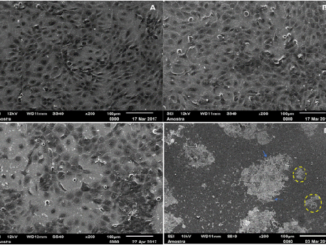
CeO2 and CeO2:Pr nanocrystalline powders prepared by the polymeric precursor method: Yellow and red pigments with tunable color
Abstract: The development of stable and reproducible inorganic pigments is noteworthy for industrial applications mainly considering more intense shades and low toxicity. Among the various candidates to substitute non-hazardous red and yellow pigments, CeO2 and CeO2:Pr have been attracting attention because of their opacity and high-temperature stability besides being environmental-friendly and health-friendly. In this study, nanostructured CeO2 and CeO2:Pr samples were synthesized using the polymeric precursor method and structural and optical characterizations were performed. Scanning electron microscopy reveals the morphology of CeO2 nanoparticles in which the particle size ranges from 22 to 28 nm as a function of the annealing temperature. Pr-doping does not show influence on the particle size. XRD results show that CeO2 and CeO2:Pr samples crystallize in the cubic fluorite lattice with Fm3m space group. Raman spectra show the fluorite F2g mode, confirming the XRD results. With Pr-doping and the annealing of the samples, two bands are observed between 550 and 600 cm−1, which are related to the defects in the fluorite structure associated with oxygen vacancies. XPS spectra reveal an increase in the ratio of Ce3+ ions depending on the annealing temperature and Pr-doping. This increase is associated with the carbon removal from the lattice by annealing. This behavior causes a change in the hue of the powders as the annealing temperature increases. According to diffuse reflectance and colorimetric measurements, CeO2 shows a light-yellow color due to the O 2pCe 4f transitions whose b* parameter mainly decreases with annealing, becoming almost white. The CeO2:Pr sample exhibits a red-orange color because of the electronic transitions between 4f2 → 5d1 states of Pr3+. Upon annealing, L* and b* parameters decrease, resulting in a red-brown shade. The charge compensation or charge transfer is responsible for the modification of the hue of these pigments.
Author(s): Gonzaga, L.A.; Santana, V.T.; Bernardi, M.I.B.; Hrubý, J.; Neugebauer, P.; Mesquita, A.
Journal of the American Ceramic Society
Publushed: 2020-11-01
DOI: 10.1111/jace.17339




